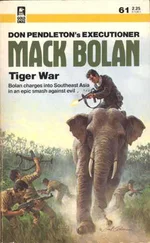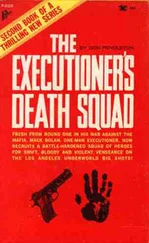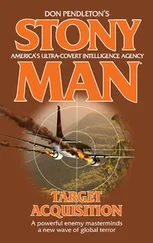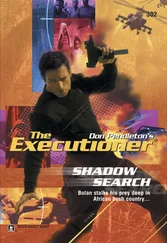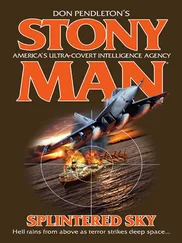In Phoenix Force’s line of work, they knew that sometimes rumors were true. The five members of this world-spanning team had become urban legends in their own right, often identified as either members of a CIA black operations group or a special SWAT team under the aegis of INTERPOL, both of which were far from the truth. It was the blurry line between official backing that allowed the Farm’s commandos to board U.S. military aircraft bound for war or to be assigned to federal law-enforcement task forces and “unsanctioned” operations that kept their hands from being tied as they did not fear the diplomatic fallout from bringing down corrupt “allies” or rogues from within the United States government. Stony Man Farm had been developed specifically to avoid the entanglements of agency jurisdictional pride or the public face of international allegiances with those to whom human rights violations or the support of criminal or terrorist enterprises was not a point of concern.
Phoenix Force and Able Team were highly agile, quickly deployable teams that answered to the law of their own consciences. While special interest groups turned congressional debate over resolving issues into an endless circle of inane logic and politically advantageous rhetoric, the Farm’s cybernetic apparatus could burn through the internet, seeking out the true trails of evidence leading to the guilty. Able Team or Phoenix Force, or often both, would then be dispatched to properly solve the problem.
Those solutions usually ended with cold-hearted, greedy or fanatical murderers torn asunder by precision gunfire, all while minimizing the risk to noncombatants and bystanders as befitting a Stony Man commando. It was far more than a matter of pride that none of the Stony Man operatives had ever intentionally harmed an innocent person in the course of a mission. Be it combat or grim laser-precise direct action, the only ones who died were those who had innocent blood on their hands.
“Something feels wrong,” Manning murmured under his breath. Fortunately the hands-free communicator built into his nearly invisible earpiece allowed him to be heard loudly and clearly by Hawkins.
The Texan himself was also aware of a feeling of dread, of a potential for doom that hung in the air. He’d picked up a familiar scent wafting through the night air as he and the Canadian had made their way toward the small house owned by the NOC. “You catch a whiff of that?”
Manning, in the dim light of a distant rice-paper lamp, frowned deeply, his features darkening in the lengthened shadows. “Dead body.”
Hawkins scanned the small cube home of their contact and noticed that one of the windows was cracked open only slightly. He moved closer to the sill and took a deep sniff. It was with a queasy certainty that he could tell the exact length of time the corpse had been moldering inside the house just by the faint odor leaking through a window left ajar. “Seven hours.”
Manning nodded agreement with Hawkins’s assessment. The brawny man went to the door and, deftly drawing the Tanto from its sheath, hammered the chiseled point into the doorjamb just off to the side of the door handle and lock combination. Against wood and brass, and focused by the sturdy knife, Manning was more than adequate to open the locked door with the sound of a sharp crack in the space of only a moment.
Hawkins had his knife out, the Karambit held with his trigger finger through the loop, the wicked talon of the blade sticking out from the bottom of his fist. The grip was rock-solid, making it nearly impossible to pry from his grasp. He also produced a powerful LED Surefire pocket-size flashlight. He was to take point and would only activate the switch when he absolutely needed to illuminate a target.
Neither Hawkins nor Manning had anticipated the need for night-vision goggles, so the less they used their flashlights, the better their natural senses would allow them to maneuver in the darkness. Less utilization of flashlights would also lower their profile.
Like it or not, if the Tokyo police showed up to a house with a corpse inside, Hawkins and Manning had both illegally broken into the dwelling. Suspicion over the death would fall on them.
Manning clicked his tongue and Hawkins glanced back at his partner. The Canadian had had the foresight to bring along latex gloves to minimize the chances of leaving behind fingerprints or DNA. Hawkins pocketed the knife and sheathed the Karambit swiftly to free up his hands for donning the gloves, then quickly rearmed and readied the light to scan the shadows if necessary.
“Won’t have much time,” Manning mused softly. “The door cracking open will have been heard by someone.”
“This doesn’t seem like an area with a lot of 9-1-1 callers,” Hawkins said, following his nose to the body.
The Texan came to a halt, seeing the outline of the body on the floor.
In life, her name had been Veronica Moone. At least, that was the name given to her nonofficial cover. She’d been there in the guise of a young college graduate traveling abroad, living in Japan, sometimes working as a translator and sometimes teaching American English to local students. The ruse had given her plenty of room to move around, allowing her to travel to different Japanese cities for schools or businesses needing English translators. Invariably she’d had an inside edge for identifying potential threats to those global corporations.
In her role, either speaking to the parents of grade-school students or conversing with young businessmen looking to make it easier for themselves internationally, she could pick up details and information with far greater precision than the most advanced satellite imagery.
Moone wasn’t the name she’d been born with, Hawkins doubted, any more than their cover names were real.
Seven hours and her body was still in rigor. Kneeling beside her, he used what little ambient light was available to look for signs of injury. Barring that, he cupped his fingers over the lens of the flashlight and the glow between his fingers and a gleam he let loose to splash over her body. Shielding the light from being visible through the windows gave him immediate illumination, both figuratively and literally.
A line of bruising on her throat, marked by a large knot of blackness over her windpipe, revealed the tool of her death as being a garrote.
Manning took a glance, then frowned. “Silk scarf with a coin knotted into the middle.”
“Or para-cord around a large chain link,” Hawkins said, though he didn’t really believe that. “Why in hell would someone kill her along the lines of a Thuggee killer?”
Manning’s shrug didn’t give Hawkins any good vibes. Unfortunately, Manning’s familiarity with the cultlike murder/assassination was only too much of an indicator of how often different killers resorted to techniques such as these. Hawkins hadn’t been on the team in one instance where the masterminds behind a new Thuggee cult had gone so far as to create an animatronic statue of the Thuggee’s deadly goddess Kali, complete with a compact microwave laser unit installed in her elaborate headdress that could kill with a single robotic glance.
“The Thuggee, the Assassins, the Ninja, they’re all effective, and the more they appear as something either cultlike or outré, the more layers of obfuscation fall between the murderer and the victim,” Manning said. “We’re likely the only two people in this city, or even Japan, who could have figured out that Veronica here was murdered because she was a CIA operative instead of just a poor unlucky victim of a death goddess fetishist.”
“Striker ran into some Thuggee like this a while back, too, only operating in the Middle East,” Hawkins returned. “And let’s not forget England and the so-called Ripper killer.”
Читать дальше

